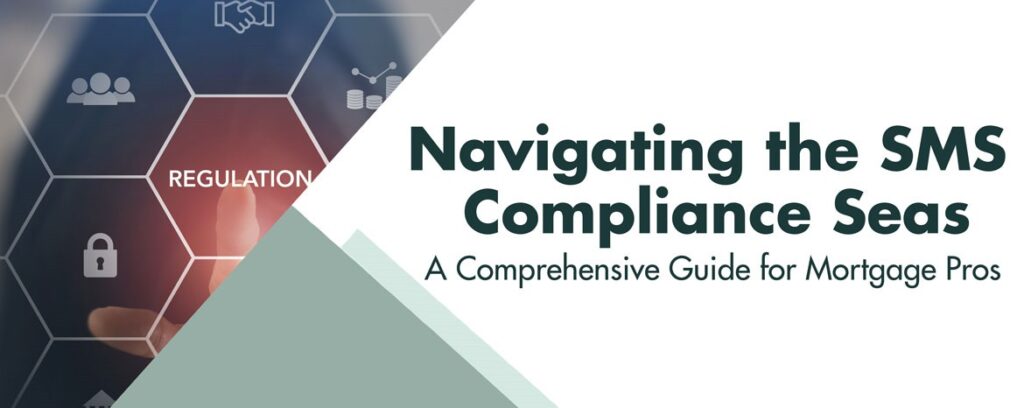In the ever-evolving landscape of communication, Short Message Service (SMS) has become an indispensable tool for mortgage professionals to connect with clients efficiently. However, recent changes in regulations have brought about the need for compliance with 10DLC (10-Digit Long Code) standards. In this blog, we’ll explore what 10DLC compliance means for mortgage professionals and how to navigate this regulatory terrain.
What is 10DLC?
10DLC, or 10 Digit Long Code, refers to the standard local phone numbers we are all familiar with. These are commonly used for person-to-person (P2P) communication but have gained popularity in the business realm for Application-to-Person (A2P) messaging. All messages from CRMs or third parties are A2P messages.
New 10DLC Registration Requirements:
To enhance transparency and accountability the TCPA and CTIA required mobile phone carriers in the U.S. to implement a registration process for businesses using 10DLC for A2P messaging. This regulation was put in place to protect consumers from unwanted and unlawful messages.
A2P Messaging Use Cases:
The new regulations outline specific use cases for A2P messaging on 10DLC. Campaigns must be approved through the 10DLC campaign registry. Businesses are required to accurately categorize their messaging content, whether it’s promotional, transactional, or a mix of both. Understanding and correctly classifying your messages is crucial for compliance.
SMS Compliance:
SMS compliance is the guiding principle of promotional text messages, ensuring that consumers are shielded from unwanted texts and that businesses maintain the integrity of this dynamic communication channel. Remember, a proactive approach is the best defense against potential compliance pitfalls. It’s not just a best practice; it’s a mandate that forms the foundation of ethical text marketing.
Why Prioritize SMS Compliance?
- Protecting Consumer Rights: Compliance ensures that consumers have a say in the messages they receive, fostering a relationship built on choice and transparency.
- Avoiding Legal Repercussions: Non-compliance can lead to hefty fines, ranging from $500 to $1,500 per violation. Ouch! Following the rules keeps your wallet happy.
- Upholding Industry Standards: By adhering to compliance guidelines, we contribute to preserving the credibility of SMS marketing, keeping it a trusted channel for communication.
Mandated Steps to be SMS Compliant:
1. Express Written Consent: Obtain explicit permission from consumers to receive text messages, either on paper or electronically. Keep it simple, jargon-free, and crystal clear. Initial opt-in cannot be via text message.
2. Obtain Opt-in: The green light. A clear action taken by a user to willingly receive messages from a business. Whether through web forms, keywords, or paper forms, make sure your opt-in methods are very clear. Specify the purpose, frequency, potential charges, and other crucial details. (Double opt-in is the best practice)
3. Confirmation Messages: As a best practice, after getting the initial consent, sent out a confirmation text message. It’s like a digital handshake reiterating the opt-in and giving recipients an explanation of how to opt-out if they change their minds.
4. Opt-out Rules: First and foremost, all opt-outs must be honored. Additionally, you must regularly obtain consumer consent to respect a recipients change in interest or circumstances, and companies are responsible for being able to prove opt-out compliance.
5. Respect Quiet Hours: No one likes to be disturbed during their downtime. The TCPA says no promotional messages before 8:00 a.m. or after 9:00 p.m. (recipient’s local time). Keep your SMS campaigns in check.
In Conclusion:
SMS compliance isn’t just a box to check; it’s the bedrock of ethical and effective text marketing. By embracing these guidelines and understanding the dynamic landscape of 10DLC compliance, mortgage pros can wield the power of SMS marketing responsibly, respecting consumer rights, and remain compliant. Text on, mortgage pros! ????








